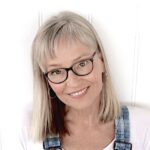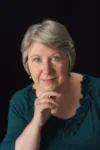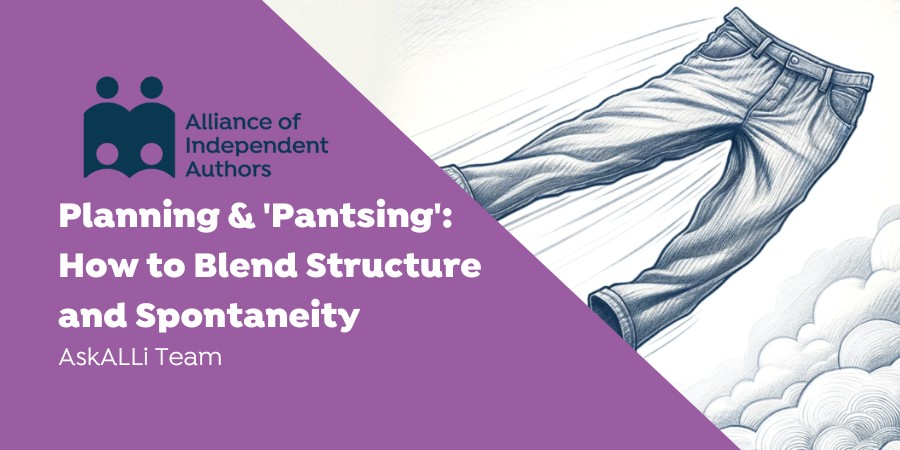Planning and pantsing are often seen as opposites, with planners carefully outlining every chapter and scene, while pantsers prefer to “fly by the seat of their pants,” discovering the story as they write. However, many authors find that a hybrid approach—combining elements of both planning and pantsing—works best, offering a balance between structure and creative freedom.
In July, we explored the methods used by planners, or “plotters,” to organize their books. Now, we shift gears to look the “pantser” method. Pantsers often start with a rough idea, character, or setting, but instead of having a detailed plot, they allow the story to unfold organically. For these writers, the joy of storytelling lies in discovery—finding out what happens next at the same time the reader does. This flexibility can lead to unexpected plot twists or deeper character development that a pre-planned outline might not uncover.
What we've learned from our Alliance of Independent Authors members is that few writers stick strictly to one method. Many adopt a hybrid approach, blending planning and pantsing. For example, a writer might know how a chapter should end but allow the characters to shape how the story gets there. This balance offers the best of both worlds—keeping the writing process fresh while maintaining direction.
Elizabeth Gauffreau
 Elizabeth Gauffreau doesn’t align with the traditional “pantser” or “planner” categories in fiction writing. She challenges the binary classification, saying, “I used to think of myself as a ‘pantser,' but I don't write by the seat of my pants; I know what I'm doing.” Instead, she identifies as a “discovery” writer, allowing the story to evolve as she writes but with a clear sense of direction. For her, the joy of writing comes from exploration, not strict adherence to a pre-set plan.
Elizabeth Gauffreau doesn’t align with the traditional “pantser” or “planner” categories in fiction writing. She challenges the binary classification, saying, “I used to think of myself as a ‘pantser,' but I don't write by the seat of my pants; I know what I'm doing.” Instead, she identifies as a “discovery” writer, allowing the story to evolve as she writes but with a clear sense of direction. For her, the joy of writing comes from exploration, not strict adherence to a pre-set plan.
One key element of her process is what she calls “reverse outlining.” Rather than meticulously planning everything at the start, she completes her manuscript and then uses this method to ensure cohesion. “I use reverse outlining at the end to make sure all the pieces work together as they should.” Reverse outlining, as the name suggests, involves going back through the finished draft and identifying what is happening in each chapter to see if the scenes and overall narrative form a coherent arc.
For Gauffreau, this arc is especially important since she writes “old school literary fiction,” which often follows a more traditional three-act structure. She uses the W storyboard method, attributed to author Mary Carroll Moore, as a way of organizing her narrative. This tool allows her to check the pacing of character development and plot.
“I take the items from the reverse outline and plug them into the three-act structure,” she explains, adding that it helps pinpoint potential issues, like scenes that are out of order or problems in the sequence of events.
By applying this approach, she avoids inconsistencies in the plot and character growth. For example, her reverse outline helps ensure that a character’s actions and environment remain consistent throughout the story. Without it, a scene might slip through the cracks—such as a character working in their furniture store after it has already been destroyed in an earlier chapter. Reverse outlining, originally from academic writing, has become an invaluable tool in her creative process, enabling her to catch these kinds of errors before finalizing the manuscript.
While Gauffreau’s process leans heavily on discovery and intuition during the writing phase, reverse outlining brings a level of control and precision to the final draft. It allows her to refine the natural flow of her work into a structured and satisfying narrative. This balance of spontaneity and structure is what makes her method so effective for her genre.
Mark David Gerson
Mark David Gerson rejects the label “pantser,” even though he has never planned or outlined any of his writing. From high school essays to the 20+ books he has authored, Gerson has always written first and then crafted the required structure later. He explains, “I have never planned, plotted, or outlined anything I have written.” This approach allows him to tap into a deeper creative flow that he feels is more imaginative than anything his conscious mind could produce.
Instead of following a set plan, Gerson trusts the story to reveal itself as he writes. He compares his process to being a passenger in a car, where the story is in control. “I like to say that my stories are smarter than I am,” Gerson says, reflecting on how his unconscious creative mind guides the narrative. This sense of discovery keeps his writing fresh and full of surprises, as he never knows exactly where the plot or characters will take him next.
For Gerson, writing is not about flying by the seat of his pants, but rather about trusting the wisdom of his stories.
“It’s all about trusting the superior wisdom of my stories and freeing that onto the page,” he emphasizes. By letting go of control, Gerson allows his creativity to take the lead, resulting in stories that are more dynamic and unpredictable.
Charlotte French

Charlotte French
Charlotte French embraces a balance between plotting and pantsing, though she prefers the terms “imagine and discover.” Her process begins with imagining key plot points and setting up a chapter framework in Scrivener. “This is my guideline; I can add or take away if need be,” she explains. This gives her enough structure to know the direction of the story while allowing flexibility as new ideas emerge during the writing process.
The heart of French’s approach lies in character development. Before she begins writing, she takes significant time to dive into her characters’ backstories and motivations. “The writing doesn’t take off until I find the voices,” she says, emphasizing that knowing her characters inside and out is crucial before the narrative unfolds. Once the characters’ voices are clear, she can truly start shaping the story.
As French writes, the story becomes a journey of discovery. She reveals that “the writing itself is about discovering the scenes, the twists and turns, new sidesteps, new details.” This openness to surprises allows her stories to evolve naturally, often taking unexpected detours along the way. Through this blend of preparation and spontaneity, she keeps her writing dynamic and engaging.
Brenda Spielman
Brenda Spielman relies heavily on her subconscious when it comes to character development. She describes how her characters seem to emerge fully formed, saying, “When they are ready, they make the jump to my conscious mind waving their arms and saying, ‘Here I am, write about me.’” By the time she starts a new book, she already knows her characters well, including their backstories and the challenges they need to face. The rest of the story, however, unfolds as she writes, allowing for a sense of discovery along the way.
relies heavily on her subconscious when it comes to character development. She describes how her characters seem to emerge fully formed, saying, “When they are ready, they make the jump to my conscious mind waving their arms and saying, ‘Here I am, write about me.’” By the time she starts a new book, she already knows her characters well, including their backstories and the challenges they need to face. The rest of the story, however, unfolds as she writes, allowing for a sense of discovery along the way.
For Spielman, much of the joy in writing comes from not knowing exactly what will happen next. “A lot of the enjoyment of writing is finding out what comes next,” she says. However, this organic process can have its challenges. At times, she finds herself juggling multiple characters who are all vying for attention, even when they don't belong in the book she’s currently working on. This creates an interesting dynamic where her creativity is pulled in different directions, making the writing process both exciting and a bit chaotic.
Dale Rogers prefers to experiment with both plotting and pantsing, depending on the project. He reflects on his experience with his first project, a poetry comic, which “just flowed out in stream of consciousness.” While he acknowledges that some of his current projects are more plotted, his background in instructional design has taught him the value of planning. Still, he remains open to discovering the right process for each individual work, refusing to confine himself to one method.
Fay Klingler starts her writing journey as a plotter, particularly when gathering information for her non-fiction and fiction projects. However, she admits that fiction often takes on a life of its own. “My characters begin to tell the story,” she says, leading her to adapt her original plans as the narrative unfolds. This blend of plotting and discovery ensures that her stories remain fluid and responsive to the characters' needs.
Michael Smythe describes his writing process as one where the plot or theme comes first, and then characters emerge to tell the story. These characters, as he humorously notes, “don’t want a share of the royalties.”
Thoughts or further questions on referencing for non-fiction, or any self-publishing issue?

If you’re an ALLi member, head over to the SelfPubConnect forum for support from our experienced community of indie authors, advisors, and team. Simply create an account (if you haven’t already) to request to join the forum and get going.
Non-members looking for more information can search our extensive archive of blog posts and podcast episodes packed with tips and advice at ALLi's Self-Publishing Advice Center.
And if you haven’t already, we invite you to join our organization and become a self-publishing ally.





